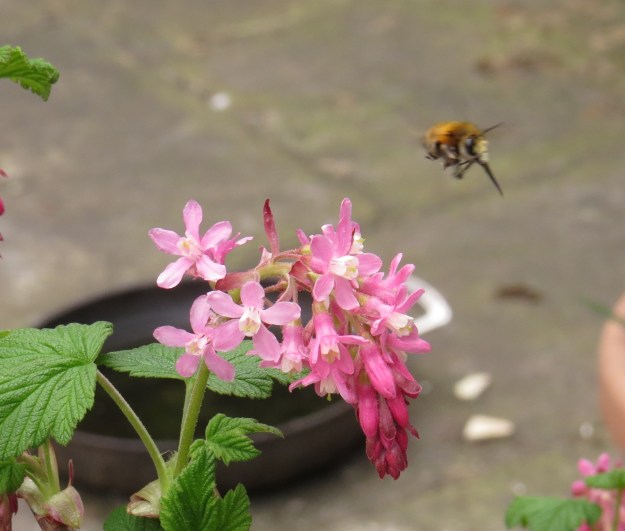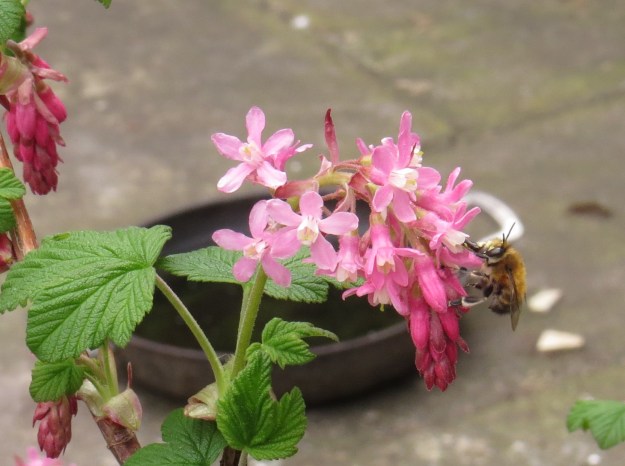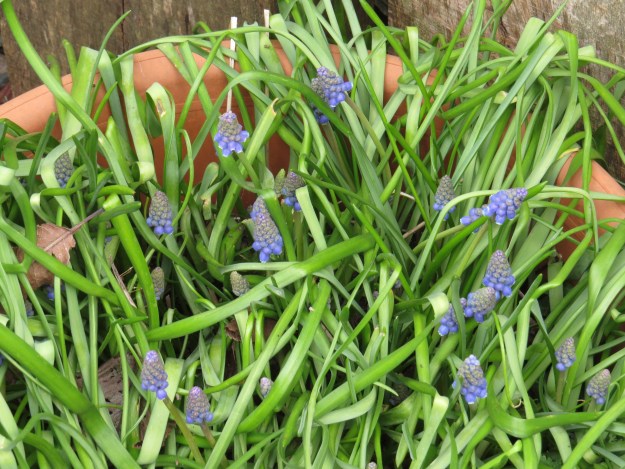How to Make a Flower Out of Your Tongue

Dear Readers, few things make me happier than the first hairy-footed flower bees. They often arrive before the end of March, and they have a great fondness for my flowering currant bush. The males are unmistakable – they have white faces, as if they've run head-first into some putty. And look at the length of that tongue! I love the way that they fly around with their tongues out, like little knights about to head into a joust.

The hairy-footed flower bee (or Anthophora plumipes to give the correct name) is generally an early riser – my Field Guide to the Bees of Great Britain and Ireland by Stephen Falk suggests that the males can be on the wing as early as mid February, though they'd have been blown about rather roughly if they'd put in an appearance in February this year. The males are said to appear two to three weeks before the females, who are jet black but have russet hairs on their legs and collect pollen, unlike the chaps who are just after the nectar and some lurve. I did spot a female this morning, but as usual she was too speedy for me – the males seem to hover and hang around a lot more, while the females are very purposeful. There is a suggestion that the males hold territories around desirable flowers, so now that I have a few days off I can spend some time watching them.
The nests are usually made in crumbling brickwork and sometimes in chimneys, which is one reason why the females will sometimes appear indoors.
In the photo below you can just make out the white hairs on the last pair of legs, which indicates to me that they should be 'hairy-legged' rather than 'hairy-footed'. Maybe that's a bit too Morecombe and Wise for the apiphiles out there.

And they were not the only bees either; there were a couple of honeybees on the plant-whose-name-I've-forgotten. Remind me, readers! It's evergreen with white or green flowers, and I have a couple strewn about the garden.

The ratio of leaf to flower on the potted grape hyacinths is gradually improving, plus I suddenly realised that they were fragrant, something I'd never noticed before. I think once they've gone over I'm going to liberate them from their pots and plant them around the pond to provide some cover.


And look, the fritillaries are coming into bloom!

And the wood anemones. Please turn a blind eye to the guano if you can. I think I'm going to get nappies for the visiting birds, they have no manners at all.

The marsh marigold is doing very well, and if the water in the pond gets much lower I am going to have to tip out the frogspawn. A lot of it looks as if it will be hatching soon, though.

And here is my one and only self-sown lesser celandine. I've got some way to go before the garden is as full of golden flowers as the cemetery is, but there you go, it's a start. I might regret ever bewailing their rarity, I know.

And finally, here are a few more shots of the hairy-footed flower bees. I am very pleased with this flowering currant, but the one next to the pond is looking very sad this year, I'm not sure what's wrong with it. I think I'll let it flower, cut it back a bit and then give it some TLC. I'm not sure how long they live, but I know I've had it for ten years, so it deserves a bit of a rest. Any way, let's see. A garden is a perpetual work in progress, and none the worse for it.



How to Make a Flower Out of Your Tongue
Source: https://bugwomanlondon.com/2021/03/25/poking-your-tongue-out/
0 Response to "How to Make a Flower Out of Your Tongue"
Post a Comment